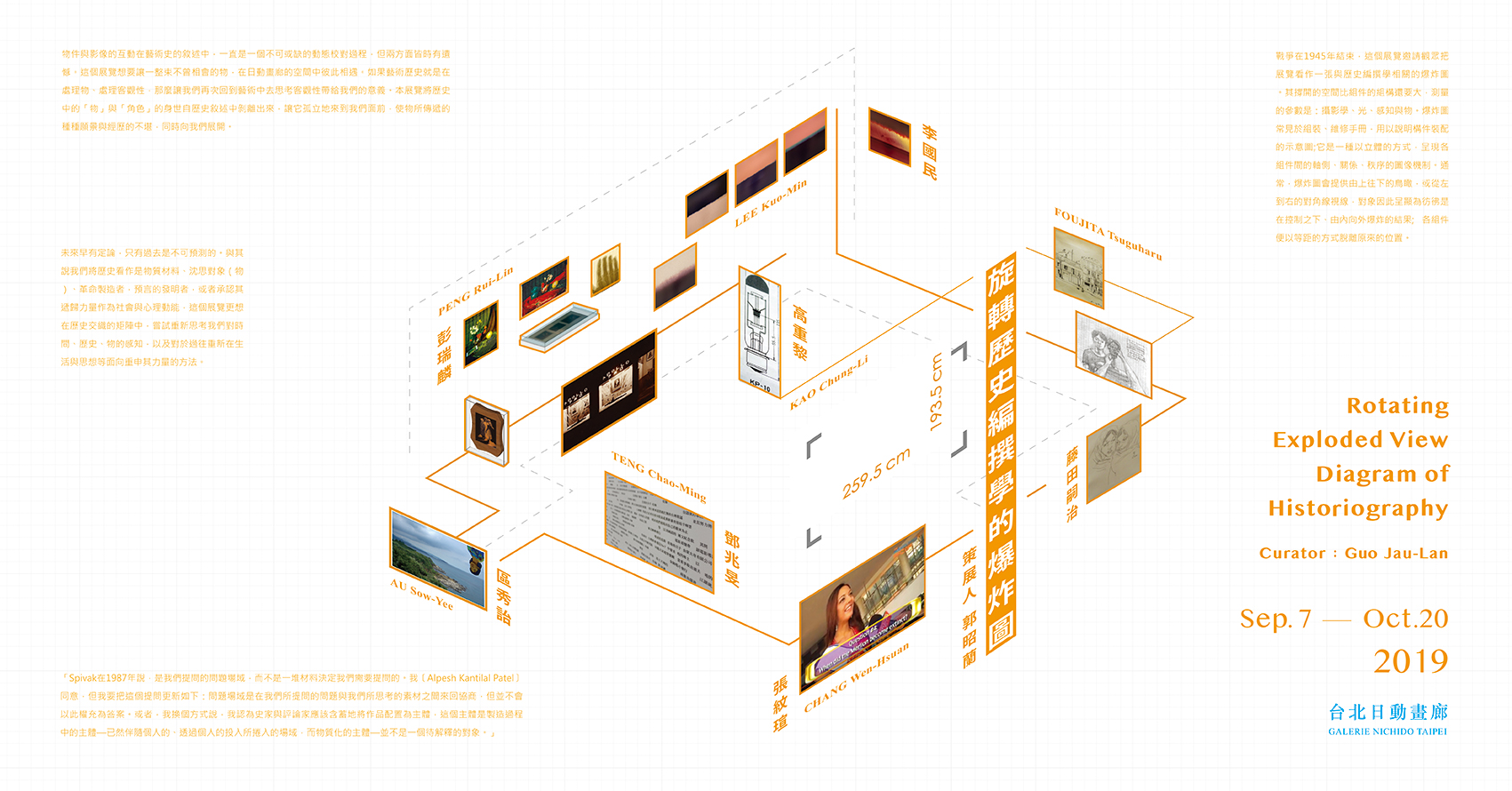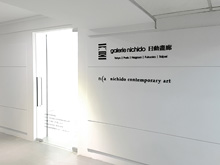Exhibitions
Rotating Exploded View Diagram of Historiography

Press release_rotating exploded view diagram of historiography.pdf
Dates|2019. 09. 07 - 2019. 10. 20
Reception|2019. 09. 07 (Sat.) 16:00
Venue|galerie nichido Taipei
Curator|GUO Jau-Lan
Artists |
FOUJITA Tsuguharu
KAO Chung-Li
PENG Rui-Lin
LEE Kuo-Min
TENG Chao-Ming
AU Sow-Yee
CHANG Wen-Hsuan
Text / GUO Jau-Lan
1
The war ended in 1945. The exhibition invited audiences to see the exhibition as an exploded-view diagram of historiography. The space it expands into is bigger than the composition of the components itself. The measuring parameters are photography, light, perception and object. An exploded view is a schematic diagram explaining the arrangement of components, used for assembly of various parts seen in maintenance manuals. It’s a pictorial mechanism showing the relationship, order and the axonometric sides of the components in a three-dimensional perspective. The exploded view is usually shown from above or in diagonal from the left. Therefore, the object is shown as if there had been a small controlled explosion emanating from the middle of the object, causing the object's parts to be separated an equal distance away from their original locations.
2
The interaction between objects and images in the narratives of art history has always been an unavoidable process of dynamic proof. However, it doesn’t always work perfectly for both of them. The exhibition intends to make a group of objects that had never encountered each other meet in the space of Galerie Nichido. If art history is a practice of processing objects and objectivity, let us go back to art to reflect on the meaning objectivity brought us. The exhibition isolates the ancestry of “objects” and “roles” from historical narratives in history, presenting them in front of us. The embarrassment that objects experienced and the prospects objects delivered are shown to us at the same time.
3
“Spivak in 1987 said: ’It is the questions that we ask that produce the field of inquiry and not some body of materials which determines what questions need to be posed to it’. I agree with this but I would update it to suggest that the ‘field of inquiry’ is one that is negotiated between the ‘questions that we ask’ and the materials we think are-but may not end up being-appropriate for answering them. Put another way, I argue that critics and historians should implicitly configure the art work as a subject, which materializes as a subject-in-making with and through, their personal investments—and
sited engagement—rather than as an object to be explained. ”
4
The future has been decided, only the past is unpredictable. The exhibition does not so much treat history as substance material, object of speculative thought, creators of revolutions and inventors of prediction, or recognizing its recursive power as social and psychological force, lead us to reconsider our perception towards time, history and object, as well as our previous methods of reclaiming power in the perspectives of life and thinking, in the matrix of interwoven histories.
Special Thanks to
Peng Liang-Min , Peng Liang-Kun , Peng Ya-Lun , Emily Lee
Gallery








